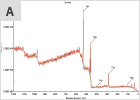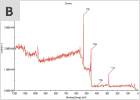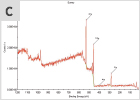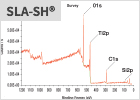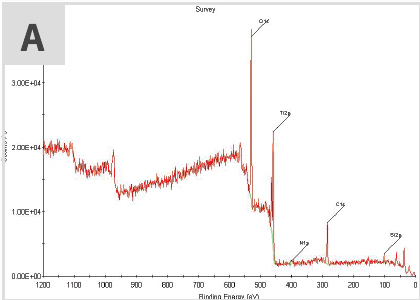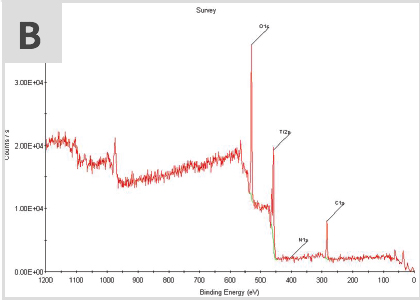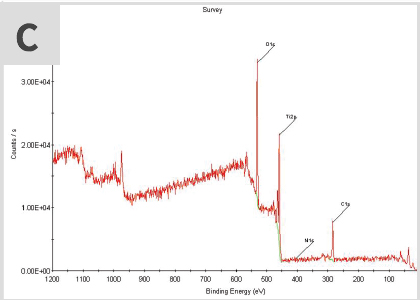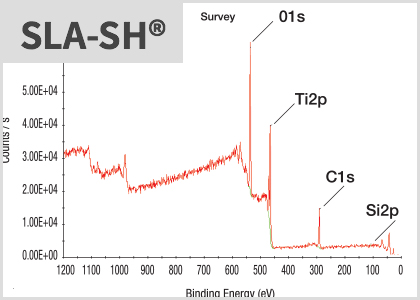Surface Treatment : SLA
Sandblasted, Large-Grit, Acid-Etched,SuperHydrophilicity-Activated Surface Treatment
- Hydrophilicity by activation with neutralization solution & bioactive material coating
- Sandblasted with Biocompatible grits unlike Majority of implants in market are done with Alumina
- Macro-pore & Micro-pore of Ti-Oxide layer mimicking the etched enamel rod of tooth
- Even distribution of roughness through the whole portion of Implant Surface
- No destruction or alternation of the surface are caused even with torque force at 120 N.cm
- Acceleration of Osseointegration and Maximization of BIC
- SLA-SH® is applied for All of the COWELL® Implant Systems
- Hydrophilicity by activation with neutralization solution & bioactive material coating
- Sandblasted with Biocompatible grits unlike Majority of implants in market are done with Alumina
- Macro-pore & Micro-pore of Ti-Oxide layer mimicking the etched enamel rod of tooth
- Even distribution of roughness through the whole portion of Implant Surface
- No destruction or alternation of the surface are caused even with torque force at 120 N.cm
- Acceleration of Osseointegration and Maximization of BIC
- SLA-SH® is applied for All of the COWELL® Implant Systems
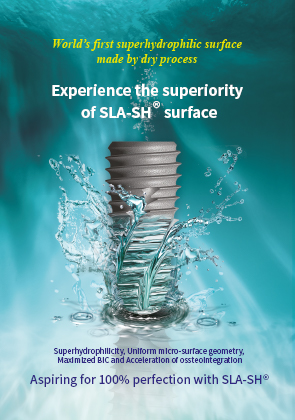
1.Evaluation using SEM (Scanning Electron Microscope) Images
A. SLA-SH® Surface magnified X300, 1,000 and 3,000
B. Comparison to other SLA treated implants currently sold in the market
- Surface treatment patterns were observed on electron microscope photographs of 5,000 magnifications for top parts of the implants.
- Sand-blasted surface conditions were observed in the product A, B and Cdue to insufficient acid etching patterns in deep parts as SLA-SH® is sandblasted with Biocompatible grits with even particle size unlike others are done with Alumina.
- The entire surface of the SLA-SH® treated implant showed uniform acid etching patterns. This implies that the acid etching of the SLA-SH® surface is perfect.
- A
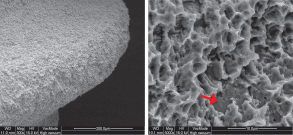
- B
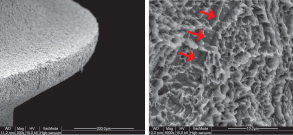
- C
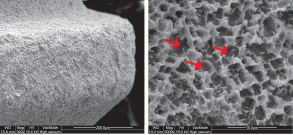
- SLA-SH®
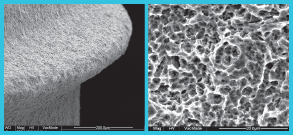
2. Evaluation using SSEM (Stereo Scanning Electron Microscope) 3D images
A. SLA-SH® Surface
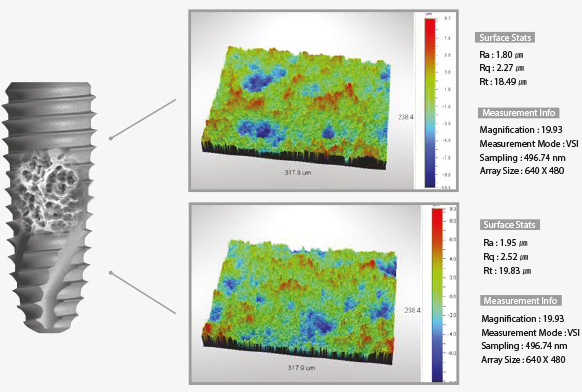
B. Comparison to other SLA treated implants currently sold in the market
- Uniform distribution of Macro-pore and Micro-pore
- Roughness average of the A, B and C 1.08~3.11um, too low or too high. However, which of SLA-SH® showed 1.90um
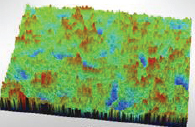 A
AUpper Ra : 2.47㎛
Lower Ra : 3.11㎛
Deviation : 0.64㎛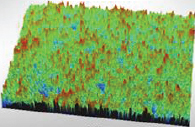 B
BUpper Ra : 1.07㎛
Lower Ra : 1.13㎛
Deviation : 0.06㎛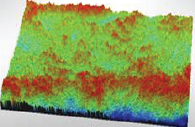 C
CUpper Ra : 2.65㎛
Lower Ra : 2.09㎛
Deviation : 0.56㎛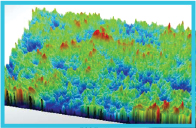 SLA-SH®
SLA-SH®Upper Ra : 2.65㎛
Lower Ra : 2.09㎛
Deviation : 0.56㎛
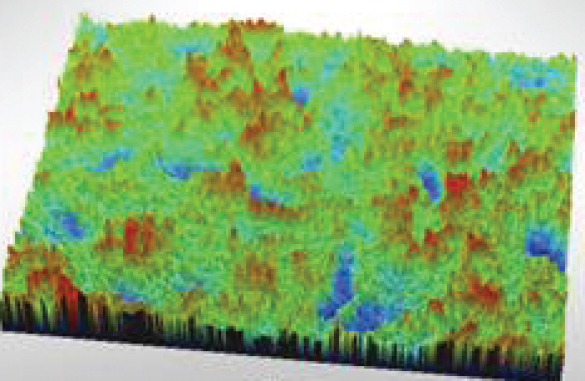 A
AUpper Ra : 2.47㎛
Lower Ra : 3.11㎛
Deviation : 0.64㎛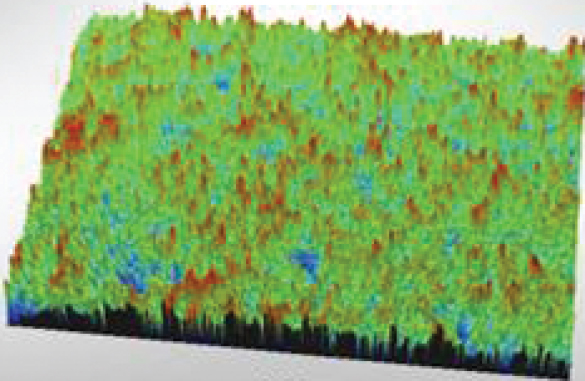 B
BUpper Ra : 1.07㎛
Lower Ra : 1.13㎛
Deviation : 0.06㎛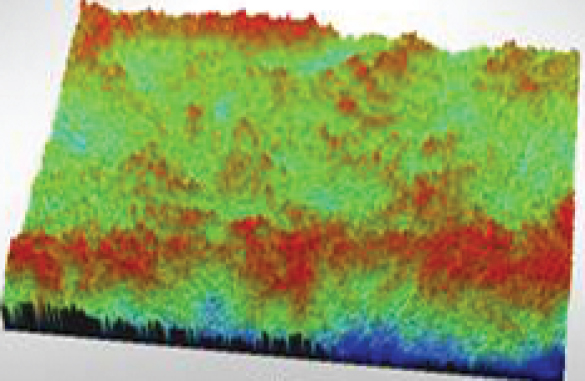 C
CUpper Ra : 2.65㎛
Lower Ra : 2.09㎛
Deviation : 0.56㎛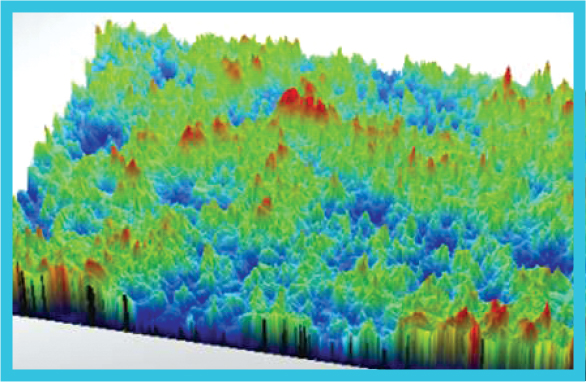 SLA-SH®
SLA-SH®Upper Ra : 2.65㎛
Lower Ra : 2.09㎛
Deviation : 0.56㎛
3.The surface activity increased due to the great surface wetness
A. Contact angle measurement evaluation result for the saline solution
-
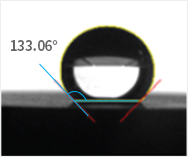 After SLA treatment(133.06°)
After SLA treatment(133.06°)
-
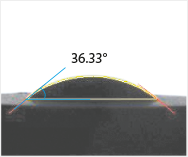 After hydrophilicity activ-
After hydrophilicity activ-
ation treatment(36°) -
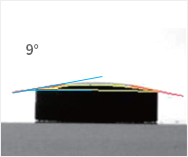 After superhydrophilicity
After superhydrophilicity
activation treatment(9°) -
 After superhydrophilicity
After superhydrophilicity
activation treatment(9°)
- A after neutralization process and bioactive material coating treatment, the sample became extremely hydrophilic and the surface energy was increased, which facilitated expedition of osteoblast activation to be fused to the bone faster
-
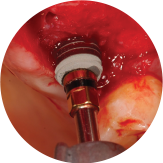 Blood Friendly
Blood Friendly
- Capillarity in the actual clinical setting, which accelerated the penetration of blood
B. Relation between surface wetness and roughness
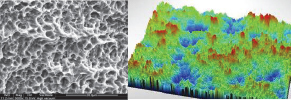 After SLA treatment (Ra: 1.78㎛)
After SLA treatment (Ra: 1.78㎛) 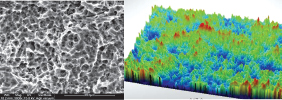 After hydrophilicity activation treatment (Ra: 1.80㎛)
After hydrophilicity activation treatment (Ra: 1.80㎛)
- There was almost no difference of surface roughness and micro-geometry, and the difference of surface wetness took place
in the same physicochemical properties as surface energy increased by hydrophilicity activation treatment
C. Physicochemical alternation of surface by hydrophilicity activation treatment
| Name | Start BE | Pake BE | End BE |
|---|---|---|---|
| C1s | 290 | 284.6 | 280.5 |
| O1s | 535.3 | 530.42 | 525.6 |
| Ti2P | 468.78 | 458.78 | 450.4 |
After SLA treatment
| Name | Start BE | Pake BE | End BE |
|---|---|---|---|
| C1s | 290.46 | 284.6 | 284.6 |
| O1s | 538.8 | 533.73 | 529.3 |
| Ti2P | 468.2 | 456.76 | 453.4 |
After hydrophilicity activation treatment
- Surface wetness was improved by increased surface energy of C1s, O1s and Ti2p after hydrophilicity activation treatment
- To maintain and even to enhance surface wetness, superhydrophilicy activation treatment was carried out and contamination by carbon in the
atmosphere is prevented during packing and sterilization
3. Its safety has been proven through perfect cleaning with an automated system
A. Comparison of surface element tests through X-ray diffraction
- Cutting-edge automated system that produces the 3rd distilled water
B. Comparison of surface element tests (X-ray Photo-electron Spectroscopy, XPS)
| Sample | C1s | O1s | Ti2p | Si2p | M1s |
|---|---|---|---|---|---|
| A | 34.12 | 45.05 | 15.11 | 5.24 | 0.47 |
| B | 31.84 | 46.49 | 15.22 | 4.87 | 1.57 |
| C | 32.19 | 47.58 | 17.58 | 2.65 | N.D |
| SLA-SH® | 27.19 | 50.81 | 17.61 | N.D | N.D |
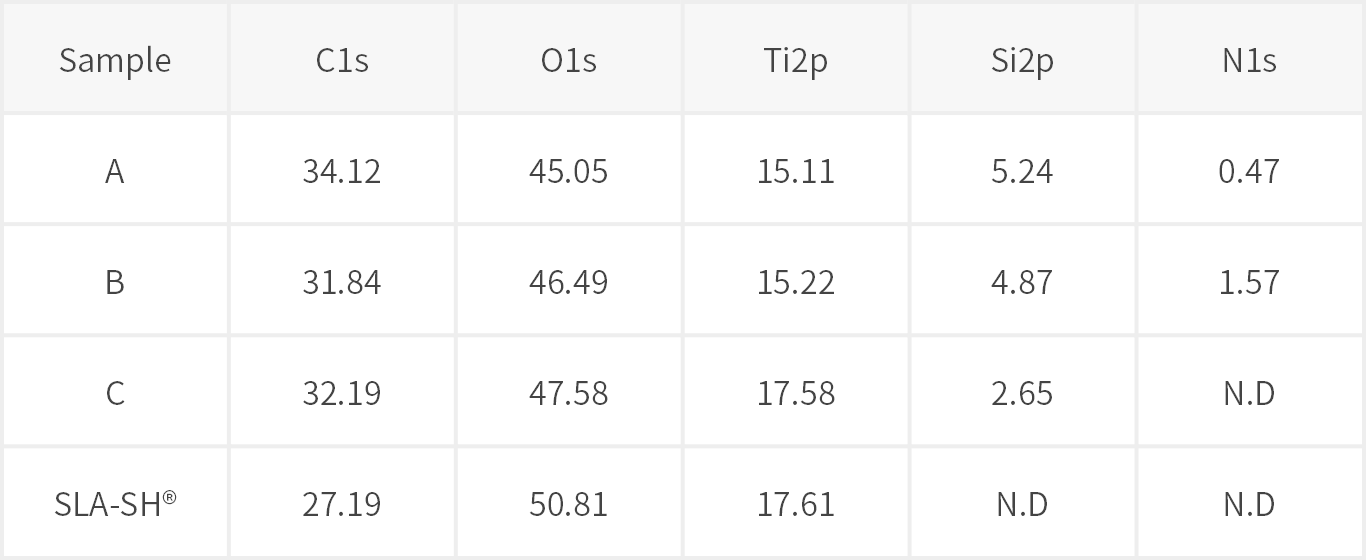
- Quantitative analysis of each surface element found 30% carbon, 47% oxygen, 16% titanium, and 4% silicon in all products.
- For SLA-SH®, they only consisted of carbons(C1s), oxygen(O1s), and titanium(Ti2p).
- Sodium hydroxide, the main element of the alkali washing solution, combined with silicon(Si) to form water-soluble Na2SiO2(OH)2·4H2O(water glass), which removed the other elements.
C. Comparison of elution tests using combustion ion chromatography
| Sample | F- | Cl- | NO2- | SO42- | Br- | NO3- | PO43- |
|---|---|---|---|---|---|---|---|
| A | N.D | 0.024 | 0.027 | 0.002 | N.D | 0.031 | N.D |
| B | N.D | 0.027 | 0.019 | 0.002 | N.D | 0.030 | N.D |
| C | N.D | 0.071 | 0.020 | 0.002 | N.D | 0.023 | N.D |
| SLA-SH® | N.D | N.D | N.D | N.D | N.D | 0.032 | N.D |

- Similar ions were detected in all the products, but they are not harmful to human because their elements and quantities do not affect the human body and those have been proven in many studies.
- For SLA-SH®, no other elements except for NO3- were detected. Alkali washing completely removed the SO42- and Cl- ions of sulfuric acid and hydrochloric acid, which are used for heated acid etching because they form water-soluble salts of Na2SO4 and NaCl.
- No elements that interfere with osteo anagenesis were found from both the surface and elution elements, which showed that the cleansing process was perfectly carried out.




